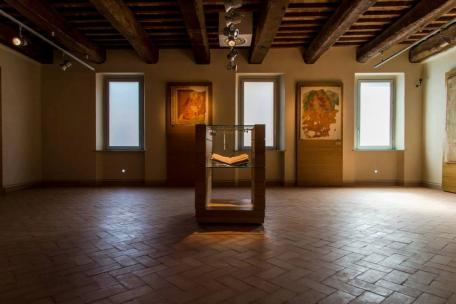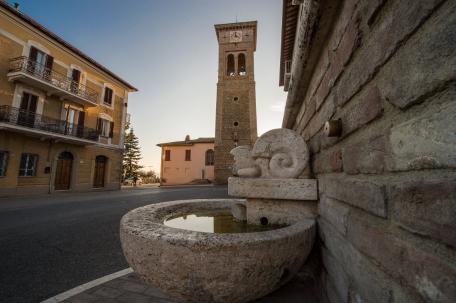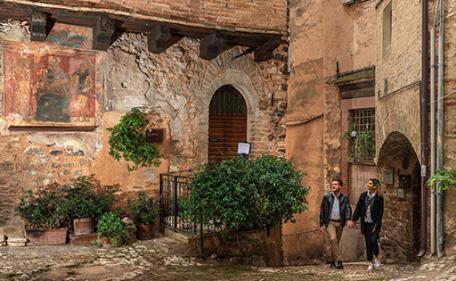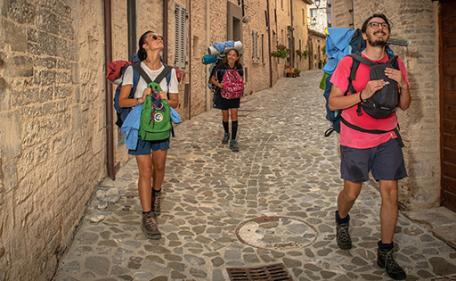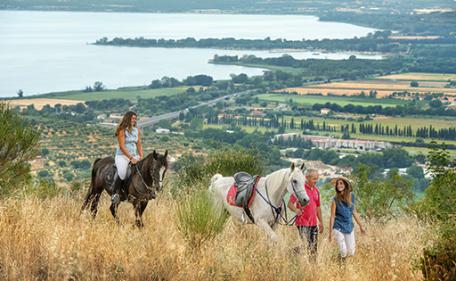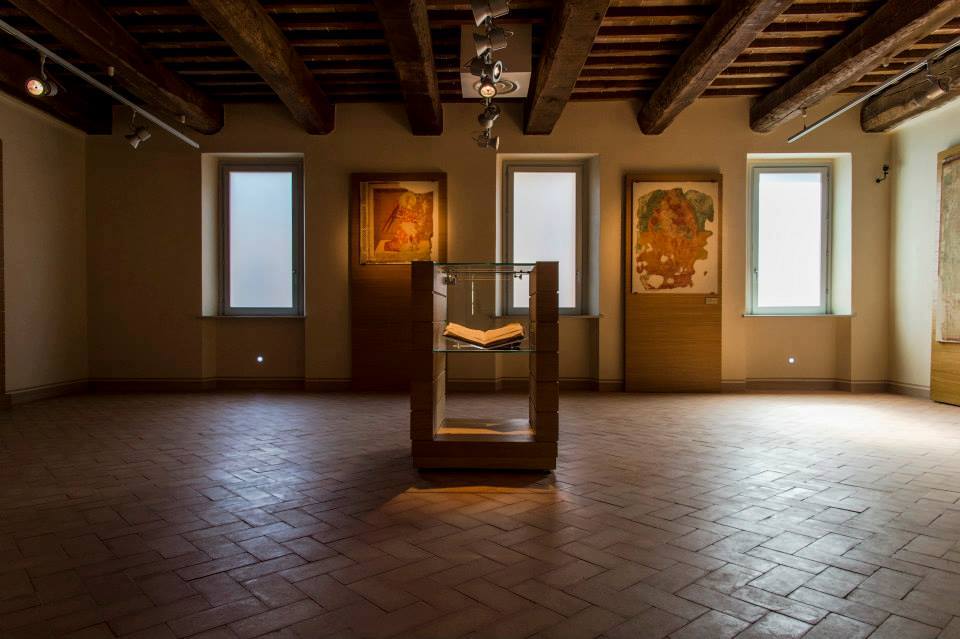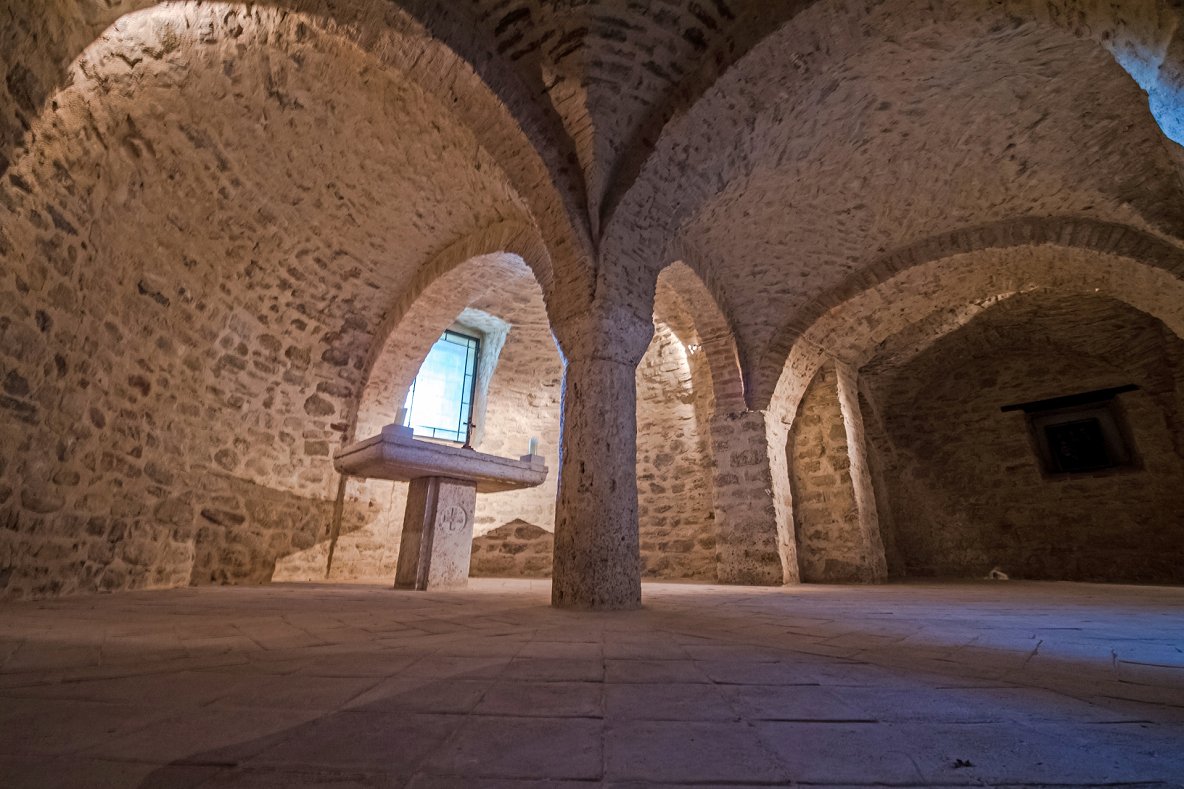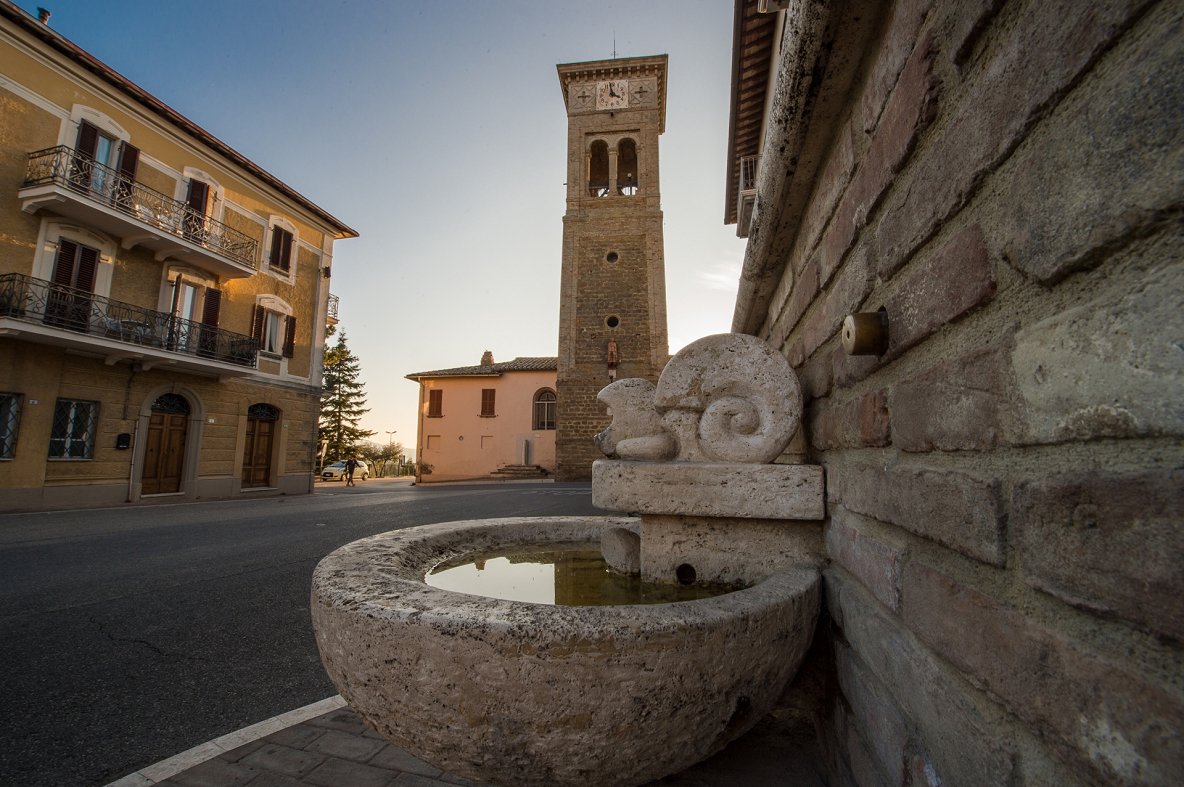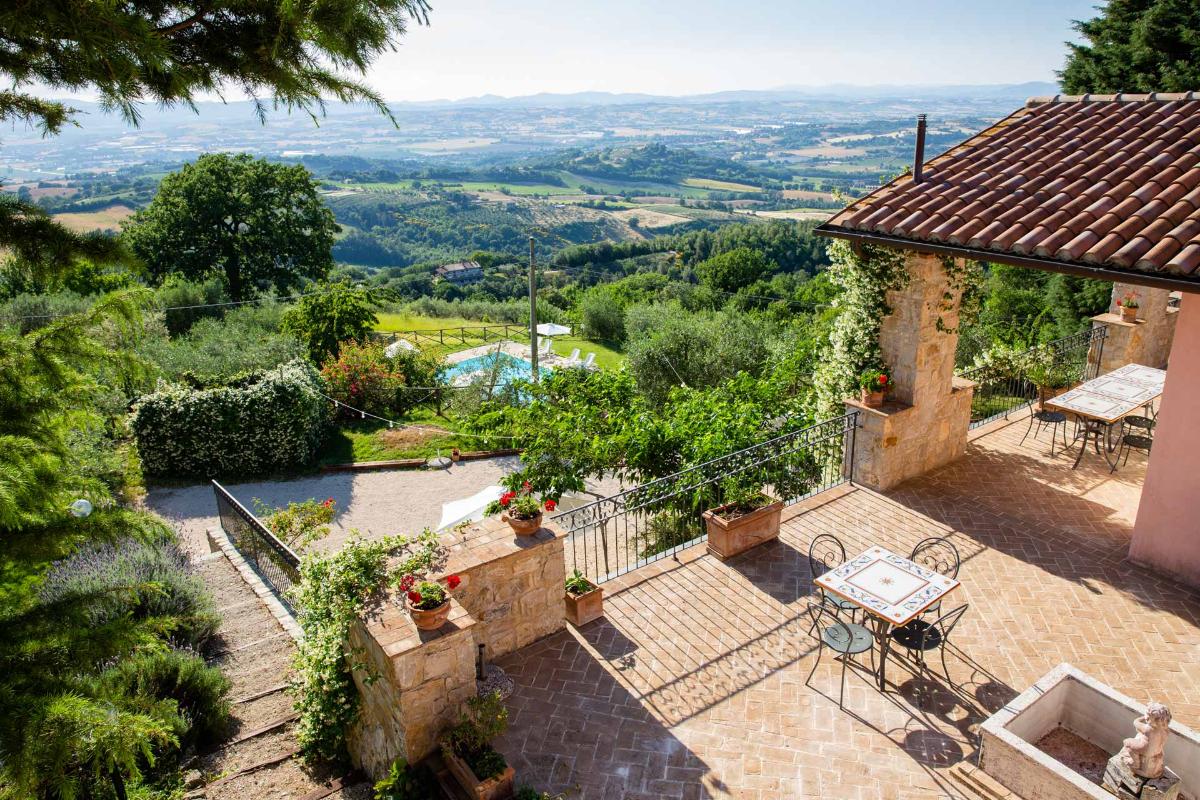| Start | Cannara |
| Arrive | Cannara |
| Distance | 27 km |
| Height difference | From Cannara to Collazzone- 900 meters ascent, 640 meters descent ; From Collazone to Cannara- 640 meters ascent, 910 meters descent |
| Difficulty | Intermediate; Long route, smooth but very hilly |
| Ground | paved, off-road |
| Recommended bike | MTB, gravel |
| Duration | Approximately 8 hours by foot, 3 hours by bike |
| Suitable for | Suitable for practiced hikers and cyclists with some training |
Starting from the central Piazza San Matteo in Cannara (Pg), where it is possible to view the homonymous Church of San Matteo, the trail then leads to the picturesque village of Collemancio which is worth a visit: Exiting the city center along Via Santa Elisabetta, you reach and continue along the banks of the Topino River for about 1.2 km until meeting Vocabolo Ceretagna. At this point, continuing with your back turned from Mount Subasio, Assisi and the village of Spello, climb up Via Collemancio until you reach the town of Collemancio, which is located on a hill overlooking the Umbrian Valley.
An ancient charm still vividly present is evoked by the solid overhanging city walls and the sturdy keep protecting the main entrance door, where the emblem of the village (a tower surmounted by a keep and Guelph battlements) is carved. The history of Collemancio has its roots back in Roman times, as evidenced by the archaeological site of the city of Urvinum Hortense (1st century BC). This ancient Roman town whose remains can be admired here, is located in an enchanting position, which in its height made this city the perfect dominator of a magnificent panorama over the valley which was inundated by the Lacus Umber, an extended lake which at that time, left Assisi and Spello on the opposite shore. Archaeological excavations have brought to light many artifacts that are permanently exhibited in the Antiquarium and in the Museum of the City of Cannara, including the noteworthy 65 square meter mosaic belonging to the baths, dated between the end of the 1st century and the beginning of the 2nd century AD. This work of art represents Nilotic scenes with exotic animals, and thick vegetation as a backdrop for the setting of various figurative scenes. The central mosaic depicts pygmies intent on fishing with marine animals around them.
Urvinum Hortense extended on the top of the plateau of "La Pieve", a small town located a few hundred meters northeast of the Collemancio castle. This town occupied a modest ridge (526 m. S.l.m) that jutted out over the Umbrian Valley, on the north eastern side of the Martani Mountains. As ascertained by the regular excavation campaigns and studies conducted by the University of Perugia, the ancient center of the settlement was planned during the second century BC; including the regio of Augustan VI, with the inhabitants enrolled in the Stellatina tribe. However, it received a true urban development only between the end of the 1st century BC. and the beginning of the 2nd century AD.
From the Church of Madonna delle Piagge in Collemancio, take the dirt road SP412 in the direction of Pomonte and go down on the right for about 7 km, then turn right onto a dirt road passing through the woods and continue straight onto the paved road crossing the village of Cerquiglino. From here continue downhill on Via del Rubiatino, a dirt road that leads up to Strada del Piandacardato, which, crossing the main road SP415, continues then straight onto the asphalted road Strada Gaglietolese. Go through the village of Gaglietole, a hamlet of Collazzone, after which Strada Gaglietolese becomes a country road that takes you between olive trees on the left and vineyards on the right until you come across the ruins of an ancient mill known as Mulino delle Botte. Now completely in ruins, this mill is located upon the road that runs alongside of the small River Puglia, near the junction for Gaglietole. Architecturally, the building is made up of a body with an almost square base and a small extension alongside. The perimeter walls are built in river stone mixed with brick.
After passing the remains of Mulino delle Botte, continue along this path that leads you to the Strada Gaglietolese which goes uphill through the woods. Follow this dirt road until you reach Via Jacopone da Todi and rejoin the asphalt road Via dell’Abbazia. This road will lead past the convent of San Lorenzo where you can visit the crypt of Jacopone da Todi. After passing the Monastery, continue straight on Via dell'Abbazia to reach the historic center of Collazzone from Viale Marconi, passing by the mural entitled, "Mother Nature". Located on the wall of the public parking area in Viale Marconi, this mural is a work of street art, by a group of local artists. Visually striking, the mural is made up of a series of bright colors and two halves that are divided by the central face of a crying woman who is understood as a depiction of Mother Nature. On the left side is a family sitting at the table, their faces replaced by mere skulls. Adjacent, against the background of burnt hills, a farmer with a gas mask walks by. A building is visible with the classic undulated shape of the asbestos roofs that are still present in large quantities in this territory, and the predominant color is bright red.
Having arrived at Piazza Umberto I in Collazzone, the return towards Cannara begins by going down Via della Fiera and then taking Viale Marconi. Proceed towards Via dell’Abbazia on foot, or via Viale Marconi by bike. Then take Via di Collazzone downhill for about 500 meters at which point on the left a country road continues in the middle of the woods. From this descent the view overlooks the small villages of San Terenziano, Grutti and Marcellano, hamlets of Gualdo Cattaneo. After about 1.3 km, turn left again continuing downhill in the woods for about 1 km. Then take another left to continue on the opposite side of the small hilly gorge until you reach the ruins of the ancient Mulino delle Botte, from where you may follow the same path backwards towards Cannara.
To see in Cannara:
- San Matteo Church
- Il Museo Città di Cannara
- La Chiesa di San Biagio
- Church of buona morte
- The sacred hovel of San Francesco - Majolica - Landrini Palace
- Edicola di Piandarca – il luogo della predica agli uccelli di San Francesco
- Collemancio e l'antico municipio romano di Urvinum Hortense
To see in Collazzone:
